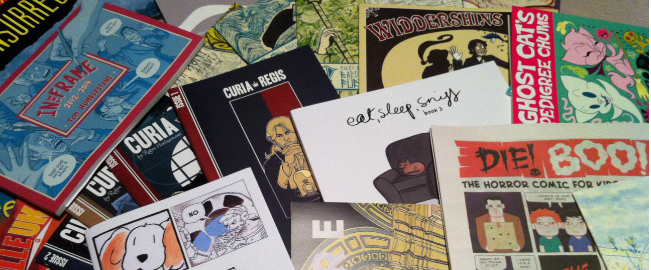 For those of us involved in the world of independent British comics – whether directly as creators and publishers or more tangentially as commentators and observers – it’s easy to take for granted just how much the scene has evolved over the last few years. The explosion of interest in self-publishing and the growth of the boutique micropublisher are just two of the factors that have ensured that small press comics sections have become noticeable and viable parts of many comics retail outlets.
For those of us involved in the world of independent British comics – whether directly as creators and publishers or more tangentially as commentators and observers – it’s easy to take for granted just how much the scene has evolved over the last few years. The explosion of interest in self-publishing and the growth of the boutique micropublisher are just two of the factors that have ensured that small press comics sections have become noticeable and viable parts of many comics retail outlets.
Fairs and shows devoted to the DIY culture of the medium continue to flourish while the opportunities for those producing their own comics to be noticed and picked up by larger publishers have never been so pronounced. There are hubs of supportive comics creative activity springing up across the country and collective groups of like-minded artists are collaborating on an ever burgeoning line-up of exciting anthology projects.
In short, we are living through the most exciting time for British comics in decades.
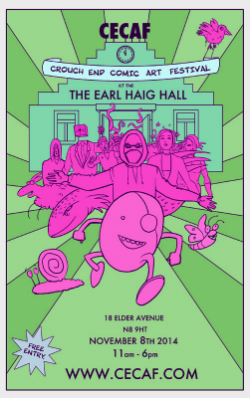 The above words are taken from my programme introduction for Sean Azzopardi’s recent Crouch End Comic Art Festival (covered here at Broken Frontier), and the reasons for reproducing them here are twofold. Firstly, they set the scene for a discussion that will be playing out over the next few weeks in a series of articles in this column under that banner title of ‘State of the Small Press Nation’.
The above words are taken from my programme introduction for Sean Azzopardi’s recent Crouch End Comic Art Festival (covered here at Broken Frontier), and the reasons for reproducing them here are twofold. Firstly, they set the scene for a discussion that will be playing out over the next few weeks in a series of articles in this column under that banner title of ‘State of the Small Press Nation’.
Secondly, it was this post-Thought Bubble blog post by Sean about the challenges he faced at the con in terms of sales and competing for customers – and the subsequent Twitter commentary from the UK small press community that it inspired – that persuaded me to approach a number of creators to talk about their impressions of where self-publishing is at on these shores coming in to 2015.
From small press mainstays of two decades standing to those just starting their comics-making journeys – all the way through to that rising wave of British micropublishers – we have viewpoints from DIY enthusiasts and boutique publishing outfits from across the full spectrum of the scene. They’ll be discussing some of the key talking points facing SP practitioners today, including how we continue to grow the audience for grassroots comics publishing, the proliferation of shows and events, and how to publicise and promote work in an ever competitive market. The conversation is, for the moment, confined to trends affecting British comics but wherever you are in the world please feel free to debate and discuss the points raised here in the comments section below.
With those opening italicised remarks in mind, today and tomorrow we’re addressing the opening question of whether there’s a down side to our rapidly expanding UK small press scene? Is the audience growing at a slower rate than the new practitioners coming into self-publishing? Is this a common experience for creators? Is their readership being squeezed as a result? And has this noticeably been affecting sales?
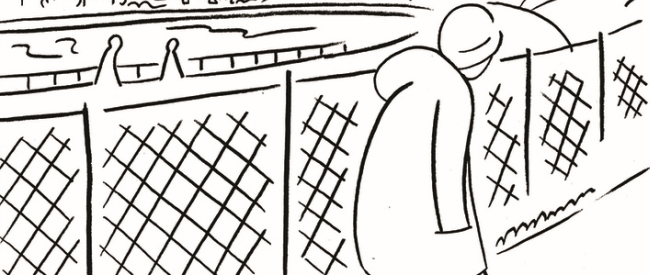
This initial area of discussion is one that Simon Moreton of Smoo Comics (recently republished in the collection Days, above, from Avery Hill) fame succinctly summed up when I interviewed him here at Broken Frontier in July this year. While optimistic that there were signs that targeted shows were beginning to make their presence felt Moreton did observe that “…the audience behind the tables at many conventions is growing faster than the audience in front of the tables, which has certainly been the experience of the organisers of Thought Bubble, and SPX in the USA over the last couple of years. The problem with that is that if half of your audience is makers, and the other half self-selecting fans, fairs will never grow fast enough to sustain that growth. And when your audience is other creators and makers, well – you’re just shifting goods and money around a closed system.”
Craig Collins is a self-publisher with a morbidly biting line of darkly humorous self-published books like Roachwell and Metrodome (and who can be seen in John Wilson’s documentary on the Glasgow Indie comics scene below). While Collins believes that the scene has flourished in recent years he does echo some of Moreton’s concerns about that closed market: “There’s an issue of creators making up much of the audience, not a problem as such, but I’ve always likened it to gigs where the crowd are mostly people in other bands in the line-up, bands playing for bands if you will. The audience has to grow for it to be sustainable.”
https://www.youtube.com/watch?v=euDPRB0qocs#t=146
For P M Buchan – a creator whose work includes horror anthologies Blackout and the recently launched Love Will Tear Us Apart – this insular outlook is something we have to take note of and tackle: “Regardless of growth in the small press scene, we all have a responsibility to expand our audiences. Looking back to the explosion of popularity for comics in the mid 90s, it’s clear that there is an audience in the UK that’s interested in the medium, we’re just not tapping into them as well as we used to. Independent creators should be evangelising the medium as much as possible, we have to get away from the ghetto mentality that we’re marketing our work to other comic creators.”
Colin Mathieson of Accent UK – a micropublisher whose genre-based work like WesterNoir is perhaps nearer the traditional comics mainstream than many self-publishers – is aware of the challenges that a higher profile for comics has brought with it. “The increased visibility of UK indie comics means they can no longer be ignored. However the rapid expansion means that the scene is incredibly competitive, given little time for new creators to find and grow a supportive audience and also putting pressure on established folk to ‘up’ their game! Accent UK occupy the ‘middle ground’ between mainstream and small press and our books are (hopefully!) accessible so we’ve actually seen sales significantly increase as more and more people discover the indie scene.”
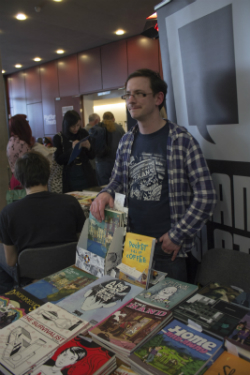 Mathieson’s comments underline the question as to whether concerns about an overcrowded market are actually valid ones in the first place. Isn’t competition a healthy factor in ensuring the quality of material remains at a high level as creators chase their potential audience? Joe Decie (right, photo courtesy of Camila Barboza) is an artist who has been published by outfits like Blank Slate Books (see our review of The Listening Agent) and Retrofit Comics but also self-publishes his work in print and via his website. To Decie the element of competition is a call to arms but he also has important thoughts to consider on the motivations behind self-publishing as well: “If you’re making minicomics to make money, then yes, maybe we are spread a little thin, but that should serve as a kick up the bum to not be complacent, and get going at putting out your best work. There’s a lot of mediocre comics out there. Also, especially if you’re just starting out, I think it’s important not to place too much weight on sales, make comics for fun and if they are good, your audience will grow.”
Mathieson’s comments underline the question as to whether concerns about an overcrowded market are actually valid ones in the first place. Isn’t competition a healthy factor in ensuring the quality of material remains at a high level as creators chase their potential audience? Joe Decie (right, photo courtesy of Camila Barboza) is an artist who has been published by outfits like Blank Slate Books (see our review of The Listening Agent) and Retrofit Comics but also self-publishes his work in print and via his website. To Decie the element of competition is a call to arms but he also has important thoughts to consider on the motivations behind self-publishing as well: “If you’re making minicomics to make money, then yes, maybe we are spread a little thin, but that should serve as a kick up the bum to not be complacent, and get going at putting out your best work. There’s a lot of mediocre comics out there. Also, especially if you’re just starting out, I think it’s important not to place too much weight on sales, make comics for fun and if they are good, your audience will grow.”
David White, Avery Hill co-publisher (Maleficium, Metroland, Reads), is pragmatic about the need for promoting work in a demanding retail environment: “The marketplace is more crowded, and it’s therefore harder for work to be spotted or highlighted. I’m pleased to say that AHP are only seeing our sales increase in recent times, but then we’re a relatively new kid on the block – and we’re constantly aware that we need to be doing all we can to promote ourselves and the creators we either work with or whose work we enjoy, to try and stand out as best we can. I just want to say, I don’t want that answer to sound negative – it’s a wonderful thing that more and more people are creating more and more work, but there’s always going to be a saturation point, and we’ve got to be aware of it.”
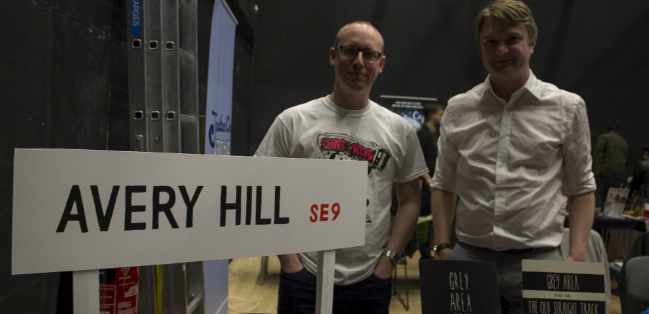
Avery Hill Publishing’s David White and Ricky Miller – Photo courtesy of Camila Barboza
Gill Hatcher’s British Comic Awards-nominated The Beginner’s Guide to Being Outside was published by Avery Hill this summer and she has been a major driving force in the Team Girl Comic collective for the last few years. For TGC that expansion of small press creators has had a knock-on effect: “Although I’m making about the same kind of money I was at events about 2 years ago, this has more to do with offering a wider selection of ‘products’ and selling slightly more expensive books than an increase in the number of books I sell. Until we launched issue #10, which got a lot more hype than usual, sales of Team Girl Comic had been dropping even though enthusiasm for the collective was still strong. This is part of the reason we decided to start releasing one issue a year.
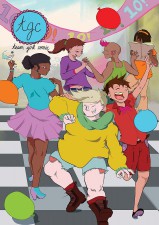 “When we went to events a few years ago, in Scotland at least, we were often the only ones selling our particular style of comic, and stood out as a result. This is no longer the case, and while I love that Scottish comics is diversifying, it does affect sales.” David Robertson who contributes to Dundee collective Treehouse Comic‘s anthology and self-publishes anthology David Robertson’s Dump is also cautionary on this point “If the audience is not growing at the same rate as the practitioners that will be a problem for sales. People who are doing it to make money are going to drop out. My sales personally are moving from practically null to just above base level.”
“When we went to events a few years ago, in Scotland at least, we were often the only ones selling our particular style of comic, and stood out as a result. This is no longer the case, and while I love that Scottish comics is diversifying, it does affect sales.” David Robertson who contributes to Dundee collective Treehouse Comic‘s anthology and self-publishes anthology David Robertson’s Dump is also cautionary on this point “If the audience is not growing at the same rate as the practitioners that will be a problem for sales. People who are doing it to make money are going to drop out. My sales personally are moving from practically null to just above base level.”
Not all creators, though, are convinced there’s a negative impact from the possibility that comics’ audience is failing to grow at the same speed as new creative voices coming into the field. Like Joe Decie, Donya Todd has been published by Blank Slate (Death & the Girls) while continuing her own ventures like the critically-acclaimed all-women anthology Bimba. Todd has an optimistic viewpoint on this matter in terms of longer-term prospects: “I think the growth of high quality, exciting new comic artists and small press publishers can only be a good thing. Obviously it means you have more ‘competition’ in terms of table sales on the day, but variety should bring more people into comics and more sales for everyone in the long run.”
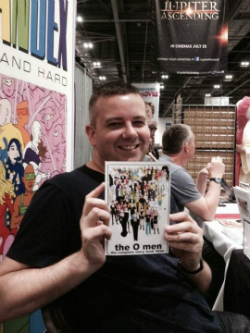 Similarly, Martin Eden (right) has been producing his own comics like The O Men and Spandex since the 1990s and his books continue to appeal to new readers “I don’t really feel like the audience isn’t growing. For instance, at Thought Bubble I was still selling to plenty of new punters.” Chris Kent – the man behind graphic novels like Medusa and The Golem – reports a similar experience “The more people I meet, the more interest I discover in my work”. Others are more self-deprecating in their assessment, however. We’ll leave the first part of this conversation with the thoughts of Alex Potts, whose A Quiet Disaster from Avery Hill was reviewed at BF this month. Potts emphasises that for some the act of creation will always take precedence over selling and self-promotion, bluntly confessing “I haven’t noticed a difference in sales, but I am rubbish at selling stuff…!”
Similarly, Martin Eden (right) has been producing his own comics like The O Men and Spandex since the 1990s and his books continue to appeal to new readers “I don’t really feel like the audience isn’t growing. For instance, at Thought Bubble I was still selling to plenty of new punters.” Chris Kent – the man behind graphic novels like Medusa and The Golem – reports a similar experience “The more people I meet, the more interest I discover in my work”. Others are more self-deprecating in their assessment, however. We’ll leave the first part of this conversation with the thoughts of Alex Potts, whose A Quiet Disaster from Avery Hill was reviewed at BF this month. Potts emphasises that for some the act of creation will always take precedence over selling and self-promotion, bluntly confessing “I haven’t noticed a difference in sales, but I am rubbish at selling stuff…!”
The discussion continues tomorrow in the second part of this column…
For regular updates on all things small press follow Andy Oliver on Twitter here.






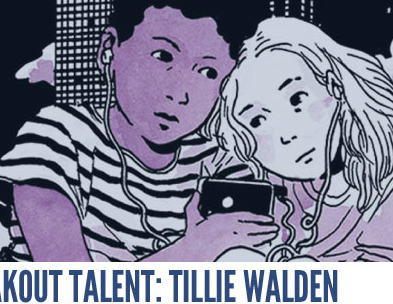

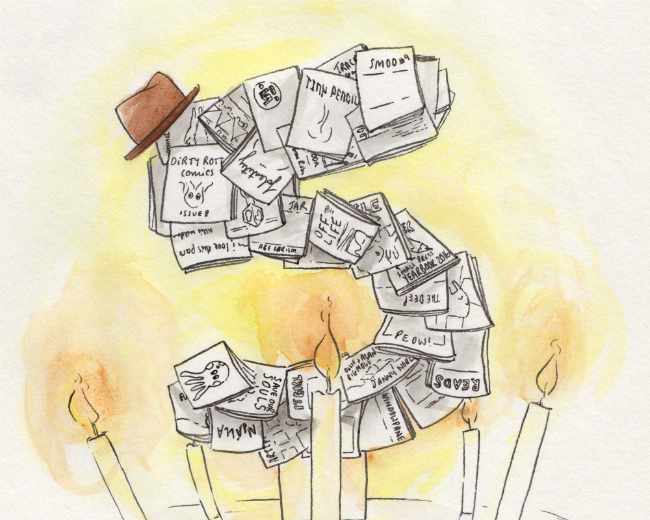
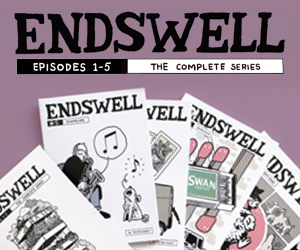





While the constant increase in both quality and quantity of the UK independent scene fills my heart with unbounded joy the fear, as stated above is that no one actually ever gets to see it; ‘bands playing for bands’.
The #IndiePower initiative from Guy Hasson of NewWorld Comics is one possible answer. He calls for indie creators to come together, pool their resources and ‘Create a huge megaphone’ to promote indie comics to a wider audience (read more here : http://newworldscomics.com/?p=417 ).
Yes, that’s precisely why we started that column here at Broken Frontier three years ago – to do our small bit to put some extra eyes on all the excellent self-published work out there.
[…] https://www.brokenfrontier.com/state-small-press-nation-self-micro-comics-publishing-uk-growing-faste… […]
[…] COMICS: State of the Small Press Nation – Is Self and Micro Comics Publishing in the UK Growing Faster tha… (15th December) […]
[…] https://www.brokenfrontier.com/state-small-press-nation-self-micro-comics-publishing-uk-growing-faste… […]